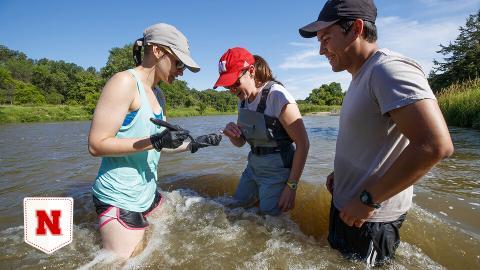By Nebraska Today
Rivers transport important nutrients across landscapes and into larger bodies of water. Among those nutrients are nitrogen and phosphorous, which stimulate the growth of crops but, when accumulating in water, may also yield “dead zones” that deprive marine animals of oxygen.
To investigate the effects of the historic flood that submerged the Cornhusker State in spring 2019, Nebraska’s Jessica Corman, DWFI Faculty Fellow, and former UCARE student Matthew Chen analyzed nutrient concentrations in the Niobrara River from June through November of both 2019 and 2020.
In the two years following the flood, concentrations of total phosphorous doubled — an increase that was more or less expected, and suggests that agricultural runoff is contributing to phosphorous in the Niobrara.
By contrast, concentrations of nitrate — a nitrogen-based compound that can leach into waterways — declined by 91.5%. While phosphorous reverted to its pre-flood concentrations by fall 2020, nitrate remained low even after the flood waters receded, a finding the researchers called “relatively unique.”
Why the persistent drop? The researchers aren’t sure. It could stem from flooding-based losses in the Niobrara’s organic matter, whose decomposition can reduce nitrate concentrations. Another hypothesis: High precipitation following the flood may have helped flush nitrate from the groundwater that feeds the Niobrara.
Photo Credit: Craig Chandler | University Communication

